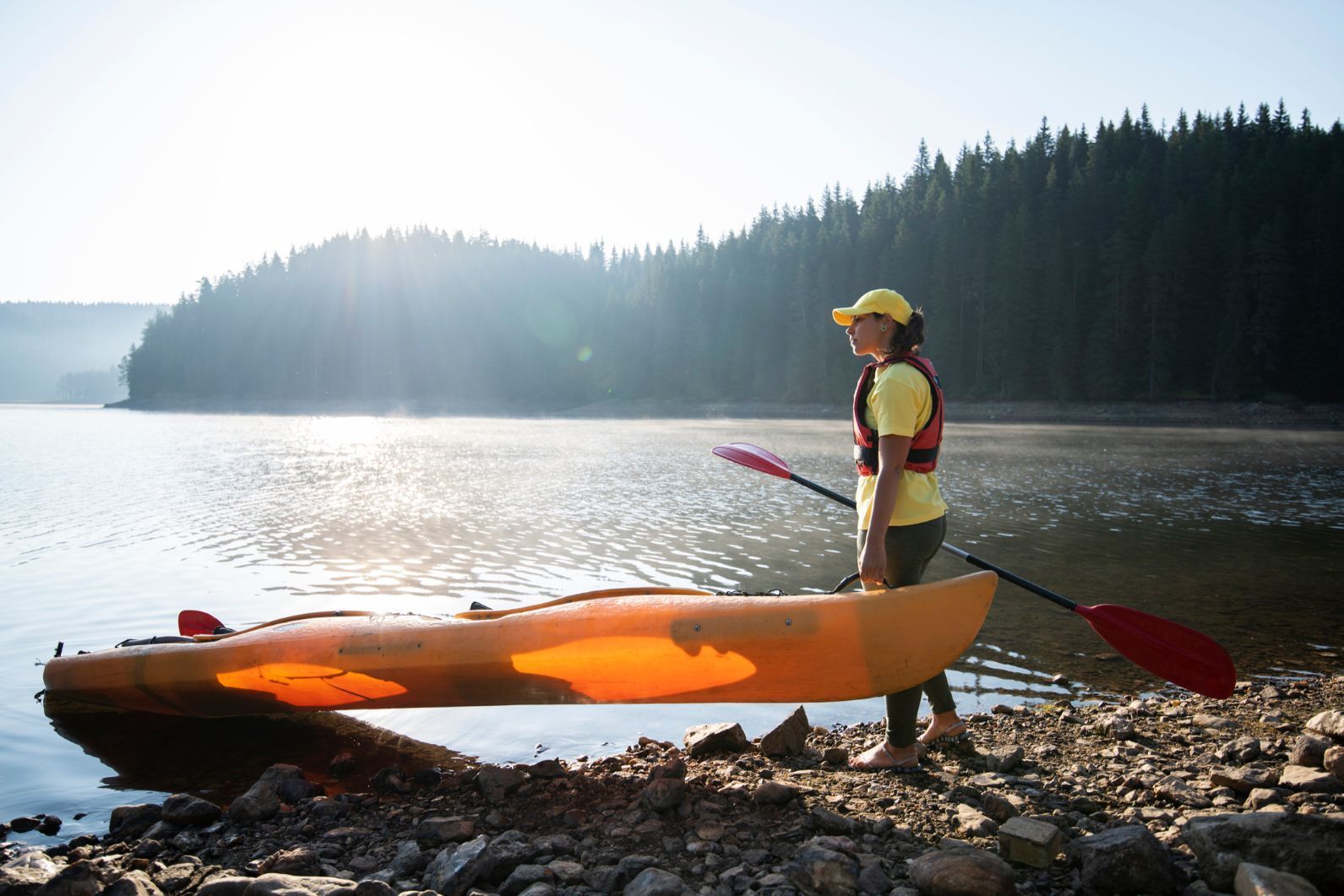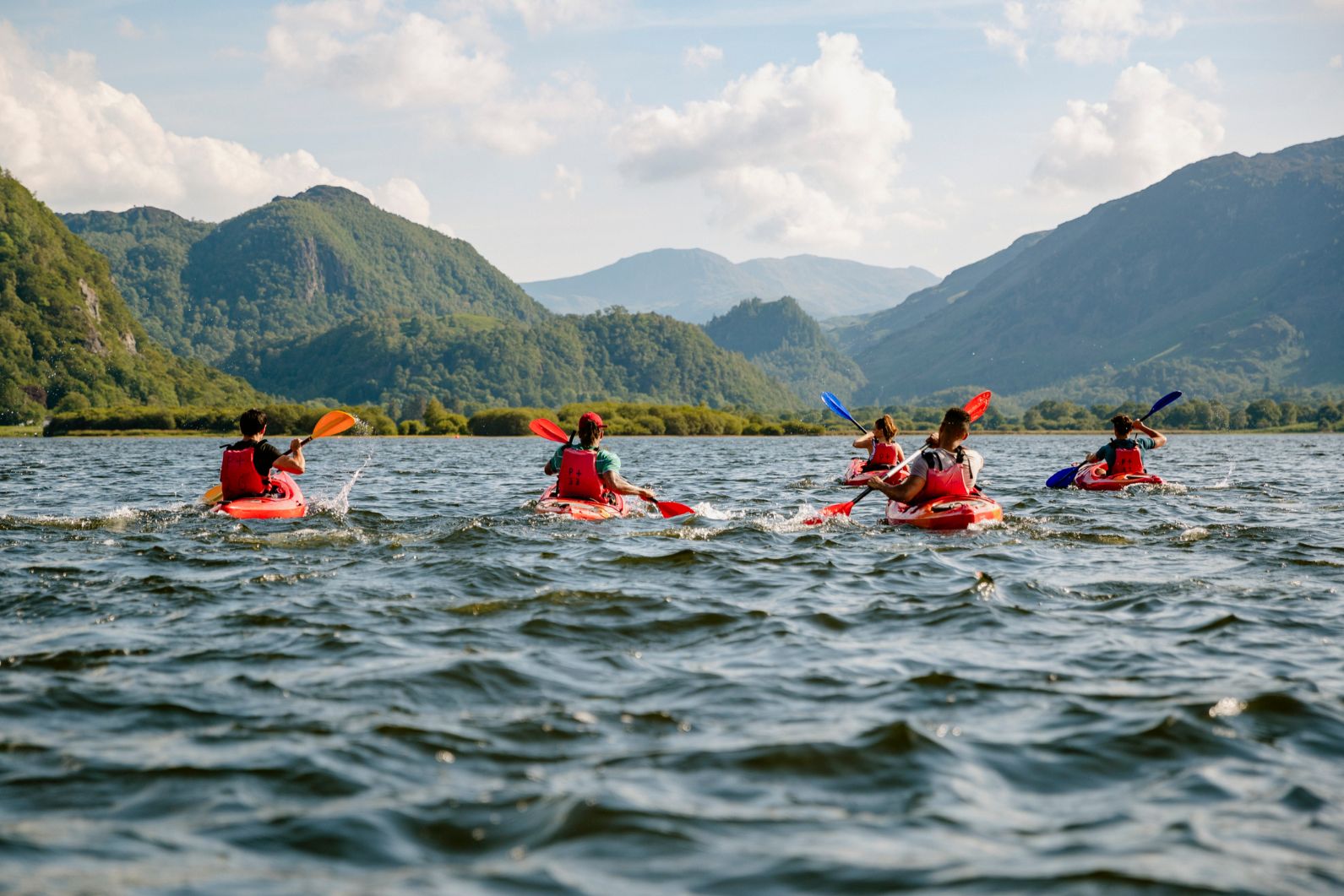
Canoe vs kayak. It’s time to choose your fighter - though in order to do so, we appreciate that you'll need to know the difference between a kayak and a canoe first. Both are waterborne vessels. Both use paddles - and both have been used for thousands of years to prevent homosapiens getting wet (with varying degrees of success) in rivers, lakes, seas and oceans.
So what’s the difference between a kayak and a canoe?

Despite the fact that many use the two words interchangeably, there is a clear distinction between a kayak and canoe. The boats are different. The gear is different. Even the history is different. So let's dig into the details...
What's the Difference Between a Canoe and Kayak?
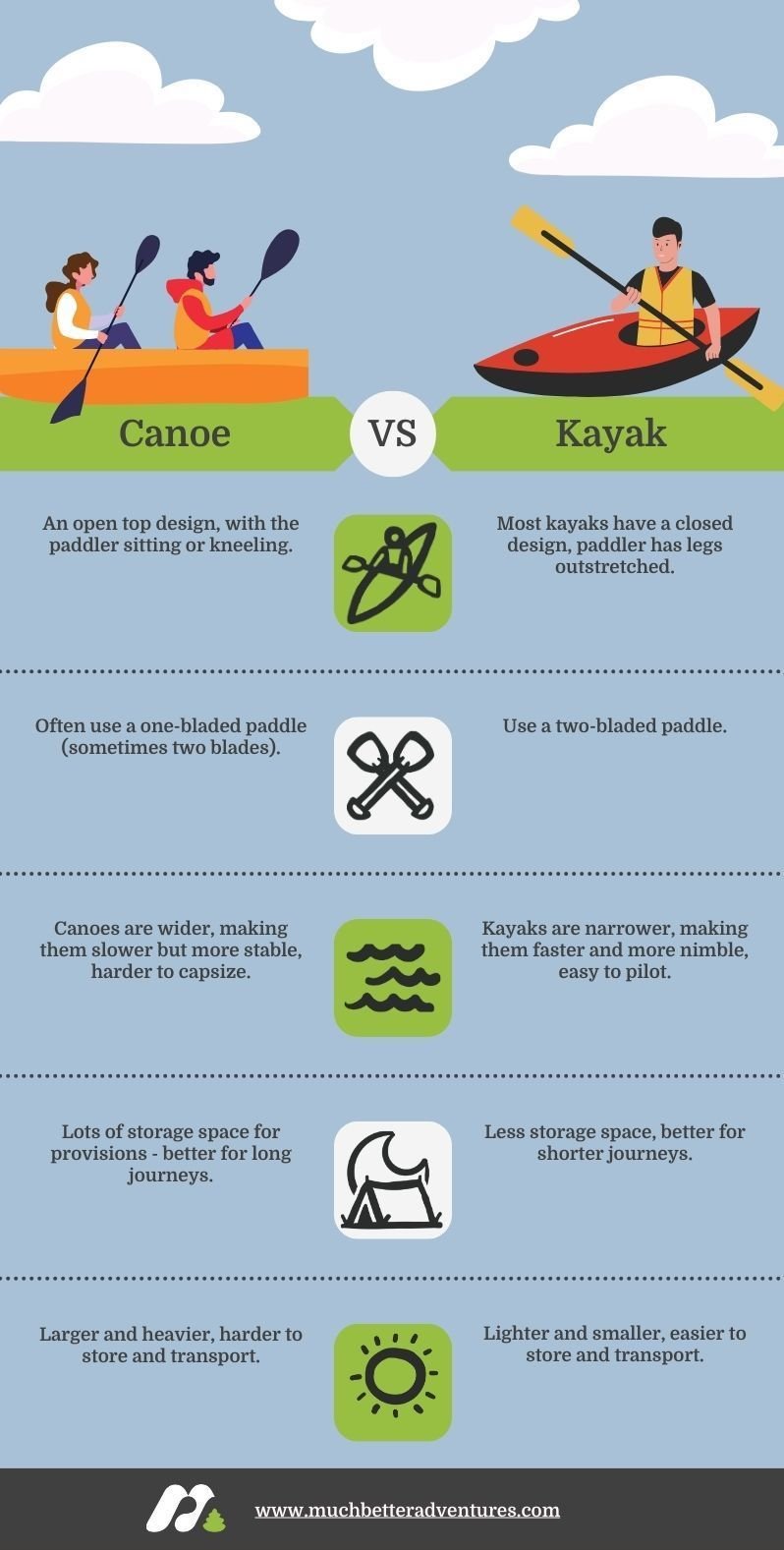
The main difference between a kayak and a canoe - and so between kayaking and canoeing - is the vessel itself.
Canoes have an open-top design, with the rower sitting or kneeling and using a single-bladed paddle to propel themselves forward. Kayaks tend to have a closed deck. The rower sits inside with their legs stretched out in front of them and uses a double-ended paddle to move forwards and backwards on the water.
If you came to this article hoping to get an absolute basics guide to the differences between canoeing and kayaking, then there you go. Voila. We have little more to offer you. Close the browser and go cheat in that pub quiz you’re competing in. However, if you want a little more detail about the differences in the vessels - as well as in techniques and equipment - then read on.
Design
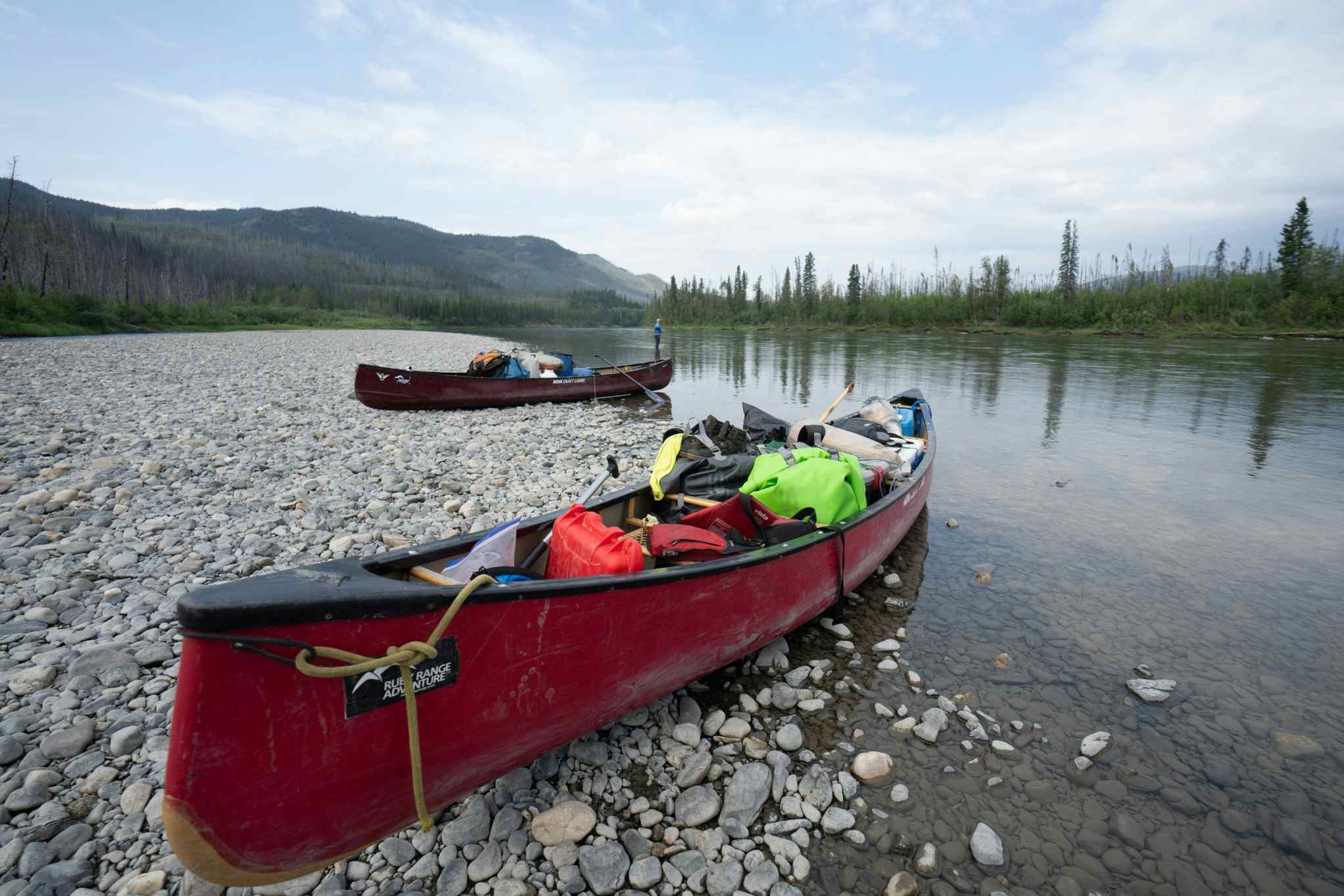
A canoe has an open-top, which means the deck inside is less protected from the elements than a kayak, which is closed-top. Because of this, a canoe has high sides, so it’s harder for water to jump up and splash you while you paddle.
A kayak is lower, so you’ll be closer to the water than if you were to paddle in a canoe. In a kayak, there is only a small hole where water can enter the boat (the same place you’ll be sitting!) - unless you get a sit-on-top kayak, which is open topped.
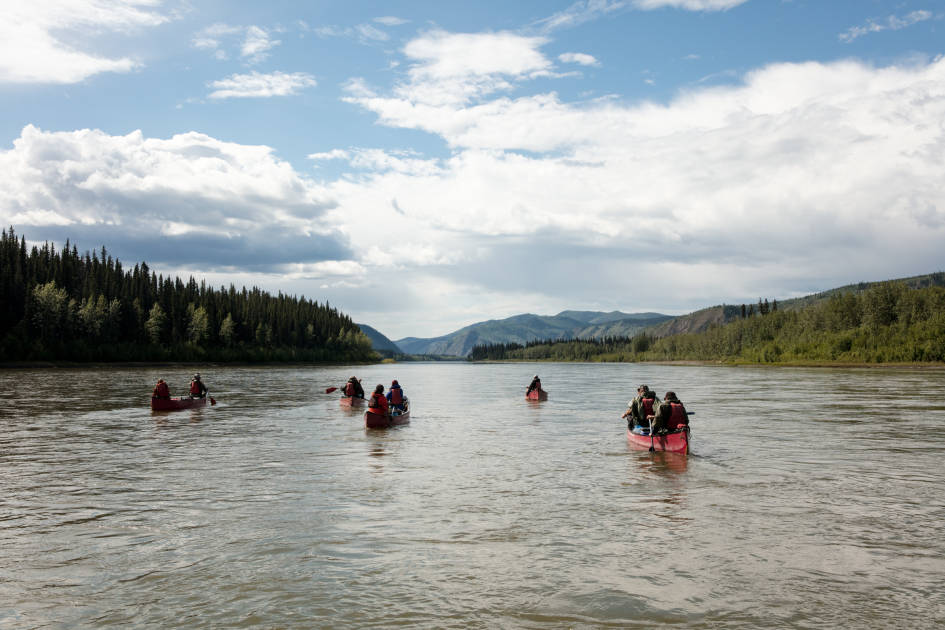
Canoes are often longer and wider, with ample storage space, whereas kayaks tend to be smaller and narrower. So for a long expedition where speed isn't a factor, we'd go for a canoe. But if you want to go fast, and you don't need much storage, we'd go for a kayak.
Because of canoes' open tops, they aren't suitable for going out to sea, as waves will slosh over into the boat - for that, we'd recommend a kayak.
Paddling Techniques
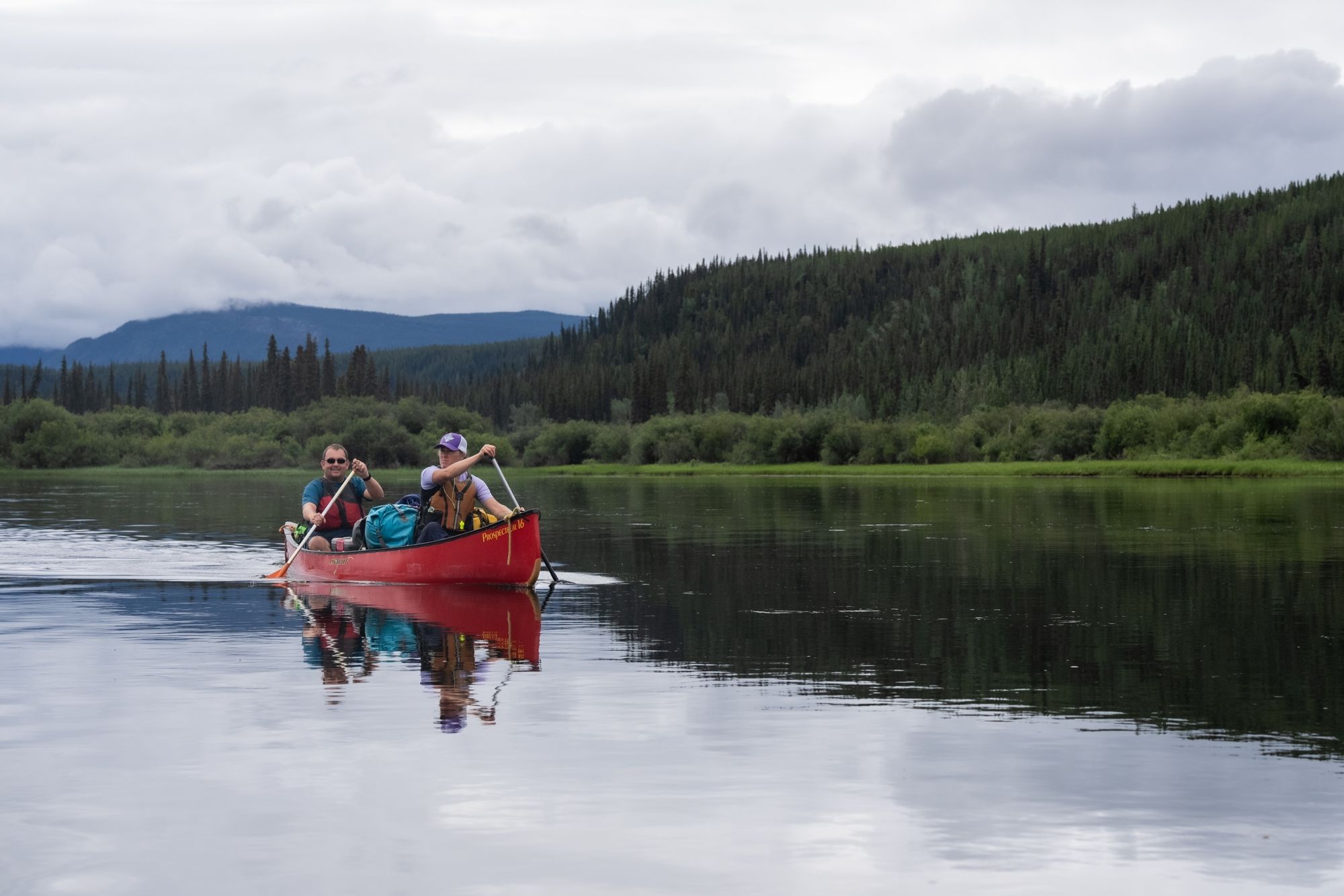
Canoeists typically use single bladed paddles, while kayakers use doubled bladed paddles. When paddling in a canoe, the paddler will put one hand on the grip and the other hand on the paddle shaft, and propel themselves forward by pushing the blade through the water with long, slow strokes. If there are two of you in the canoe you'll be paddling on alternate sides of the boat.
Because you are lower in the water in a kayak, a single paddle doesn’t provide enough power to move forward. Gripping the middle of the double sided paddle with both hands, you'll immerse each blade in the water, one after the other, propelling yourself forward. In a double kayak, you're aiming to paddle in perfect rhythm. The double-bladed paddle means you'll move more quickly through the water, and be able to manoeuvre more quickly.
Once you're experienced in a kayak, you’ll be able to try to learn to do a more advanced technique known as an “eskimo roll”. An eskimo roll is a technique used to recover if you capsize a kayak. Once your kayak is upside down in the water, you use your paddle and body to force your kayak back upright without ever leaving the vessel. It’s a great skill to learn.
Canoe vs Kayak for Stability
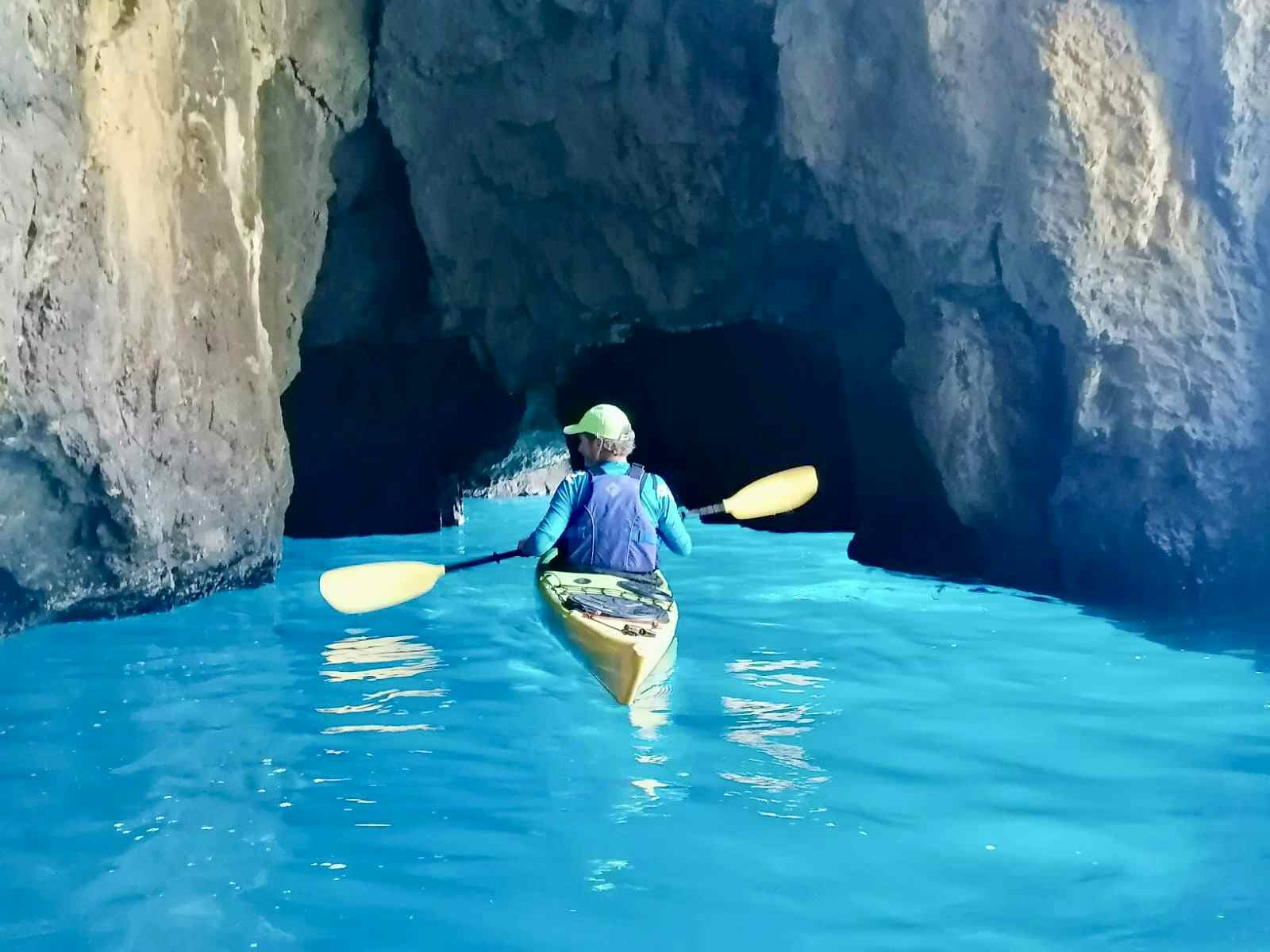
Kayaks are a lot more nimble and speedy than canoes, due to their shape, their lighter weight and the double-bladed paddle, which allows for quicker and more agile piloting. Canoes, meanwhile, are more stable and harder to capsize.
Storage and Transport
Being heavier and larger, canoes are harder to transport and store than kayaks. You can, however, buy both inflatable canoes and kayaks, although these aren't suitable for long trips.
So, here's a summary of the differences between a kayak and a canoe:
- Canoe: Usually open deck boat, seated or kneeling rowing position, one-bladed paddle. Wider, meaning more storage options, but slower in the water than a kayak.
- Kayak: Closed deck boat, seated position with legs stretched out, double-bladed paddle. A narrower, more lightweight design, making it a faster and more agile craft.

What Gear Do you Need for Canoes and Kayaks?
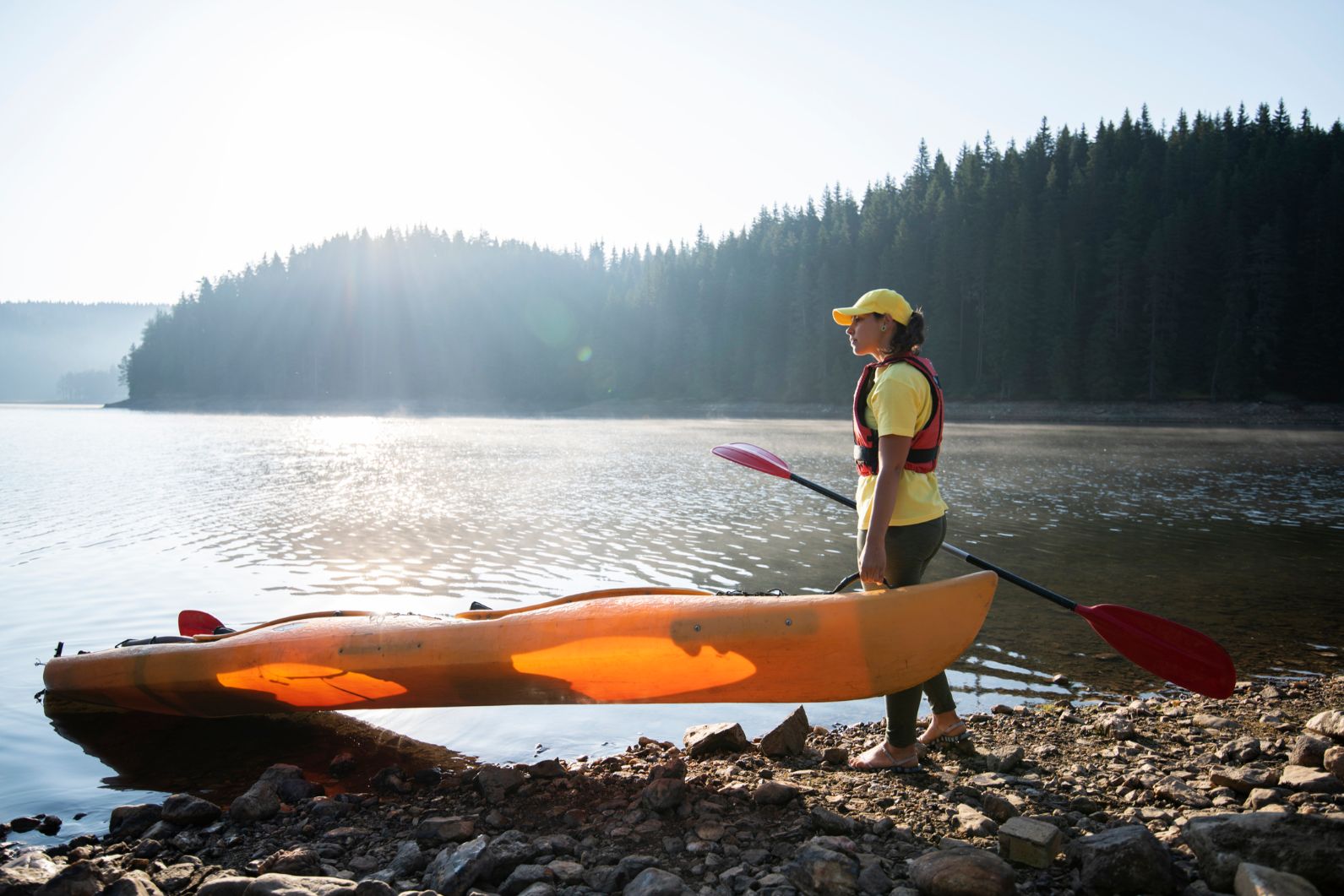
You need much of the same equipment for canoeing and kayaking. This includes:
- A canoe or kayak
- A paddle
- A paddle jacket with hood and reflective strips
- Life jacket
- Sleeveless longjohn neoprene wetsuit and neoprene booties
- Waterproof case for your camera/phone
- Drybag for storing gear
In a kayak, there is only a small hole where water can enter the boat. But it’s harder to get water out if it does get in, so many kayakers wear a spray deck to prevent water getting into their boat. This does make it slightly trickier to get out of the kayak, however, so if you’re going to use a spray deck, make sure that you’re confident taking it on and off and exiting your kayak – if you capsize, you'll need to remove it before exiting underwater.
The toughest thing about kayaking or canoeing at a beginner level is getting access to the equipment, which is big, bulky and expensive. So, a great way to get started is to book a session, or a fully-fledged kayaking adventure, with a guide who can supply gear and equipment, alongside showing you the ropes.

Is it Easier to Kayak or Canoe?
The open deck of a canoe means that many first-time paddlers feel more at ease in a canoe than a kayak, but both have their advantages and challenges. Kayaks are more nimble, easier to manoeuvre and can travel faster. But canoes are more stable and spacious.
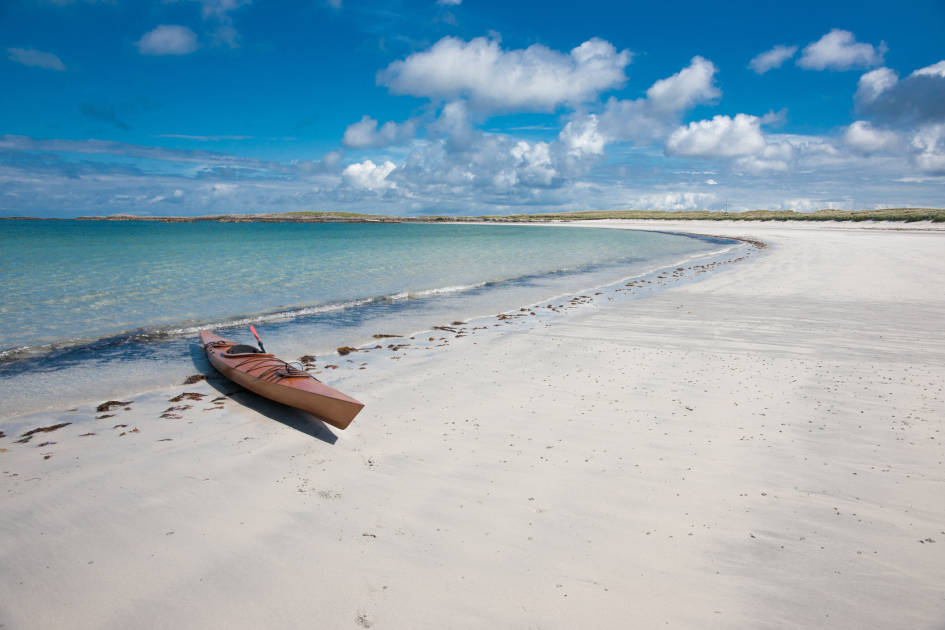
If you want a boat that's more about comfort, slower turns and has more in it, go for a canoe - though note that it may be slower and tougher to turn. If you want a vessel that's quick, super responsive and simple to paddle, then go for a kayak.
Canoe vs Kayak for Beginners
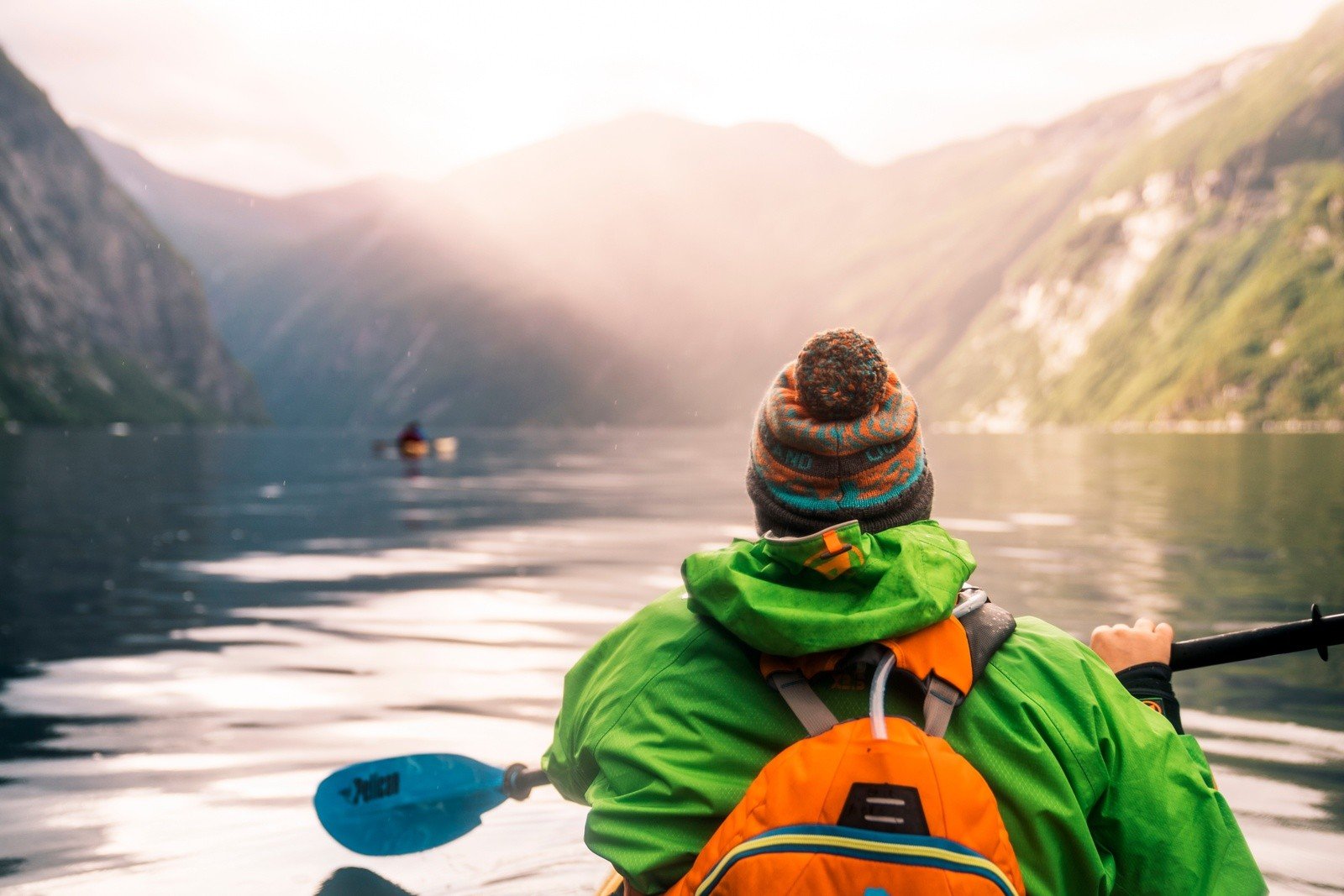
Both canoeing and kayaking are accessible to first-timers - though for safety reasons, getting a guide is always recommended. The better your balance and core strength, the better you may be initially, but as you learn the basic paddling techniques, you'll find it's as much about rhythm as anything else.
Of course, certain rivers and bodies of water are more difficult to navigate than others, so beginners should seek out quiet rivers, ideal for first-time paddlers. You want to avoid rapids and stay away from waves and rough patches of water. Hire a guide and they'll keep you safe - and teach you proper paddling techniques.
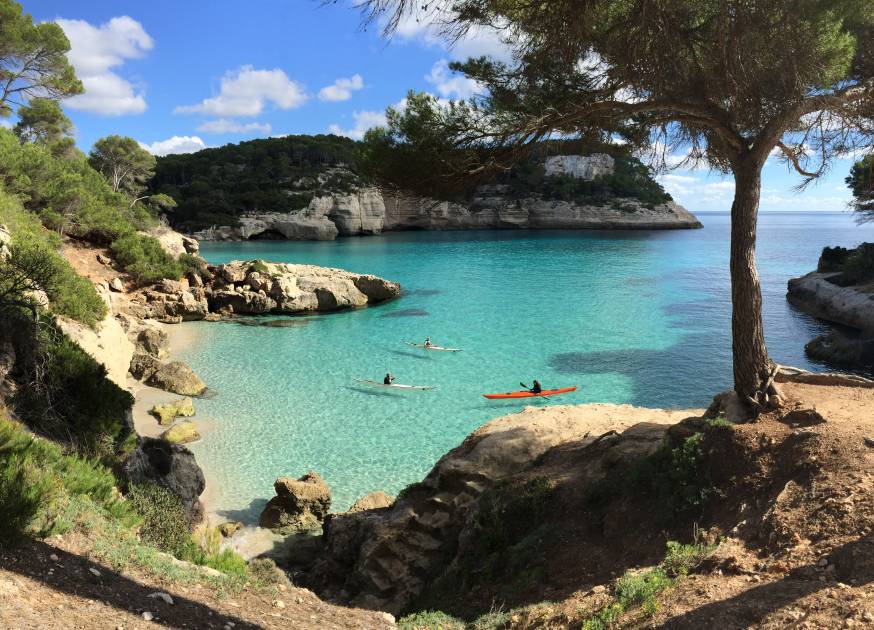
Ultimately, though, no experience is needed to try out kayaking - as long as the level of the paddling is appropriate, and it isn't technically demanding.
It's likely that you'll be able to feel the muscles in your core, arms and shoulders after a day of paddling for the first time, whether in a kayak or a canoe.
A Quick History of Canoes and Kayaks
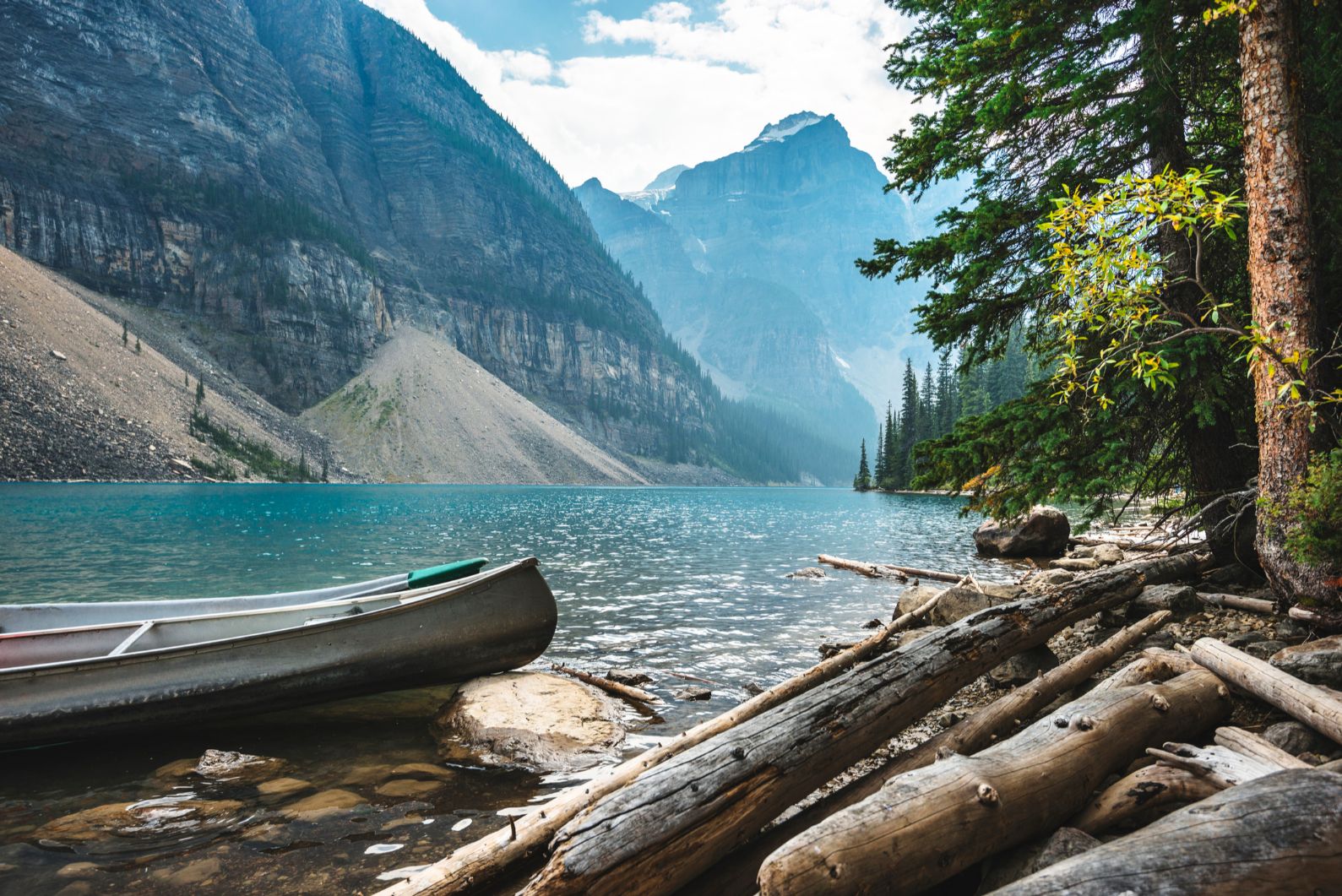
The word ‘canoe’ comes from the Carib kenu (dugout), from the Spanish canoa. The name makes sense when you think about it, and indeed, a ‘dugout canoe’ is still an alternative name for a canoe, particularly one which has been made from a hollowed tree trunk.
The earliest canoe ever discovered is the Pesse canoe, which was found in the Netherlands and dates all the way back to 8200 BC. This is currently not only the oldest canoe, but the oldest known boat in the world.
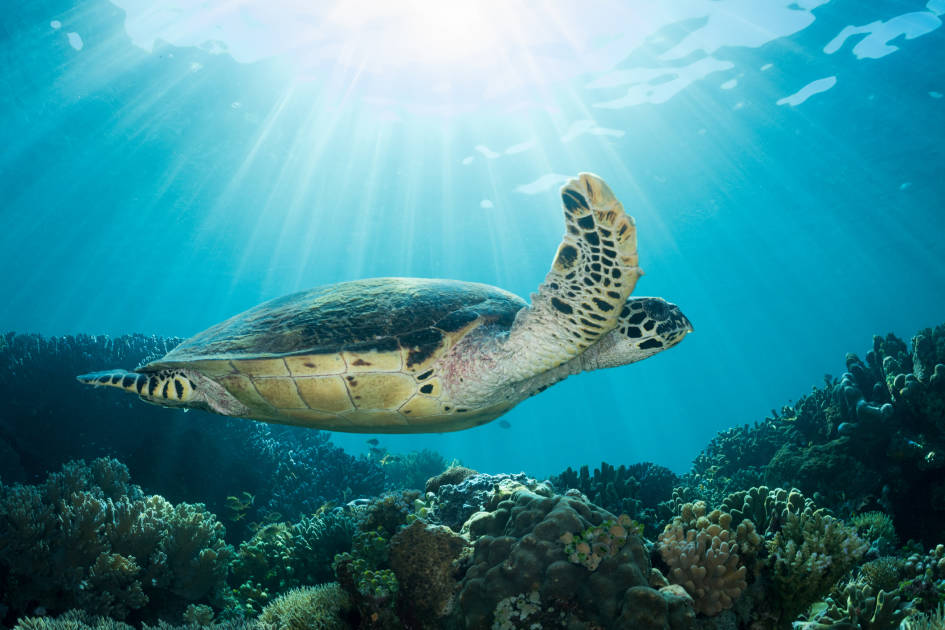
The indigenous people of America are well known for their canoes. When Europeans began exploring the area in the 14th, 15th and 16th centuries, they were impressed by the designs of the canoes, which then ended up playing a key role in the European exploration of – in particular the interior of – North America.
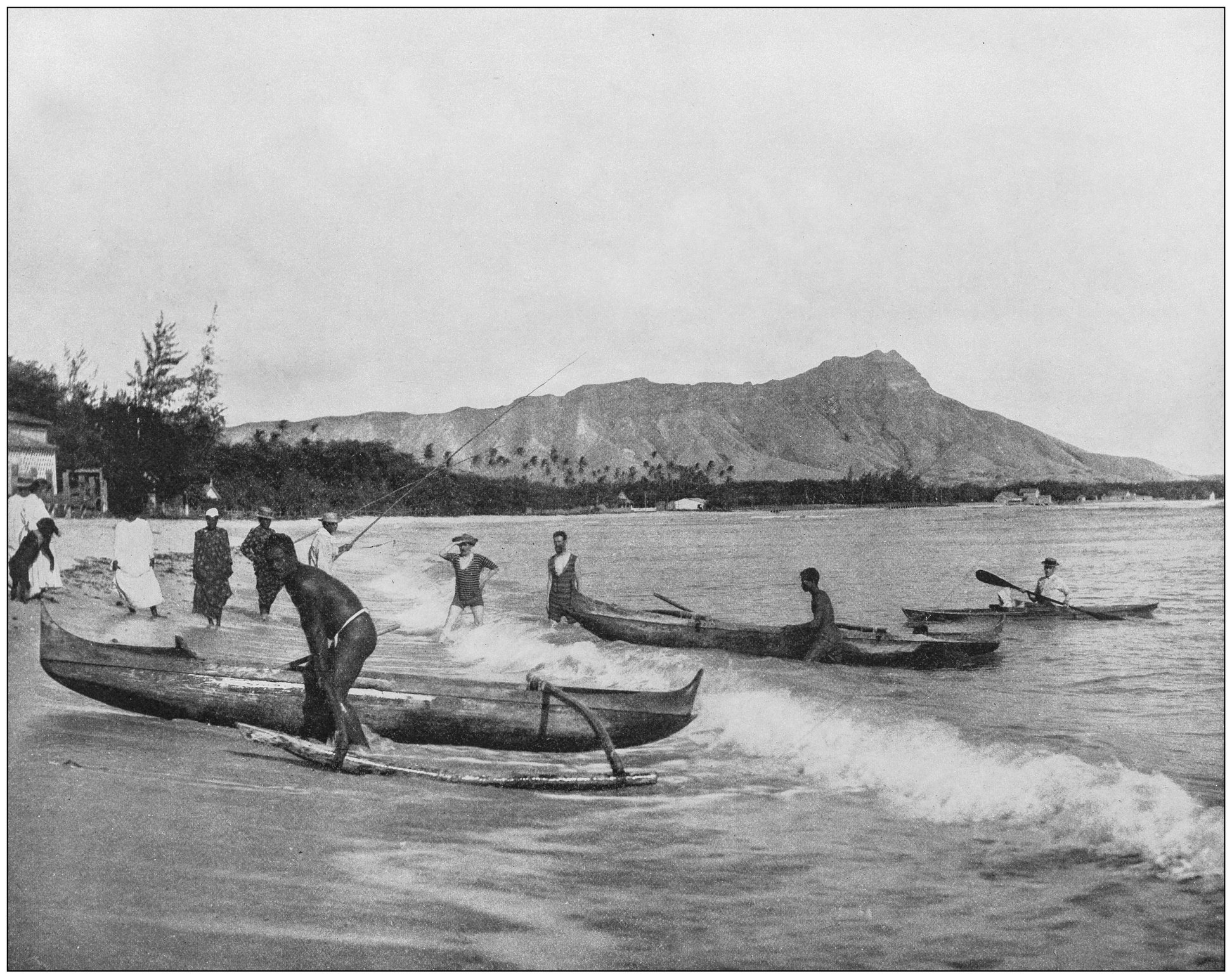
Kayaks can be traced back to Inuit tribes in Alaska, Canada and Greenland. They were commonly used for hunting and would be made from wood, with seal skin stretched over to provide the closed top. Scandinavian explorers later took up kayaking and popularised it in Europe.
In 1924, canoeing was featured as a demonstration sport at the 1924 Olympic Games. Then 12 years later, at the notorious 1936 Olympic Games (remembered best for being hosted by Adolf Hitler’s Nazi Germany), canoeing became a full Olympic sport. There were nine events contested, all in the canoe sprint, and all for men only. It wasn’t until 1948 that canoeing and kayaking entered the Olympics as a women’s sport.
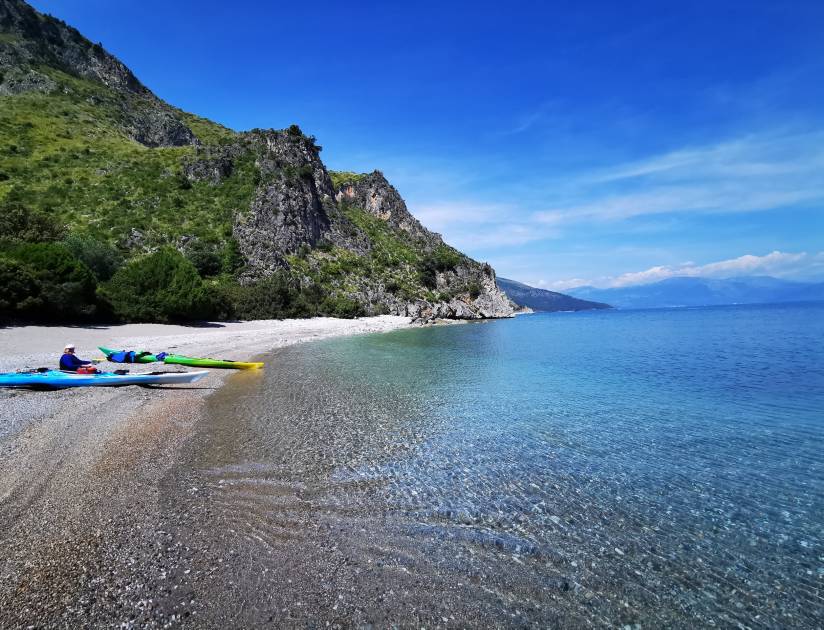
These days, rotomolded polyethylene is one of the most common materials used to make kayaks and canoes. It’s flexible, resistant and relatively cheap. Fibreglass is also common, being ultra-light, very responsive, durable and easy to repair – and wood remains popular too. It may not be recommended for white water, but it does make you feel like an old-time explorer.
Where to Go Canoeing and Kayaking
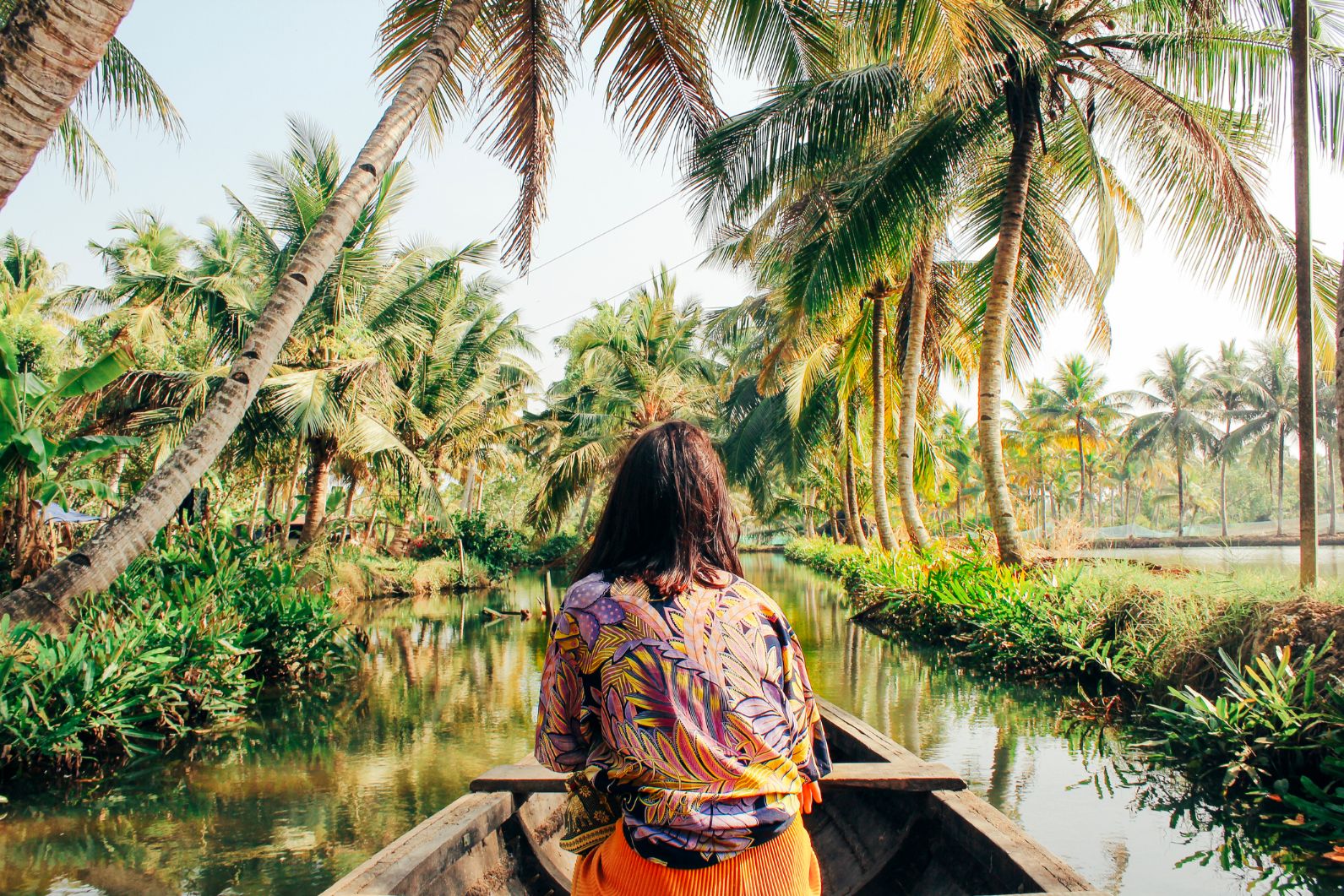
You can go kayaking and canoeing anywhere there’s water. The ocean, the local canal, even your local swimming pool – though good luck getting a kayak through the doors without the poor receptionist asking you a few questions.
If you're looking for a beginner-friendly taster session, we recommend kayaking Italy's Cilento Coast, or paddling Llyn Padarn in Snowdon.
Check out our full range of kayaking and canoeing adventures now, and rediscover the world from the water!

